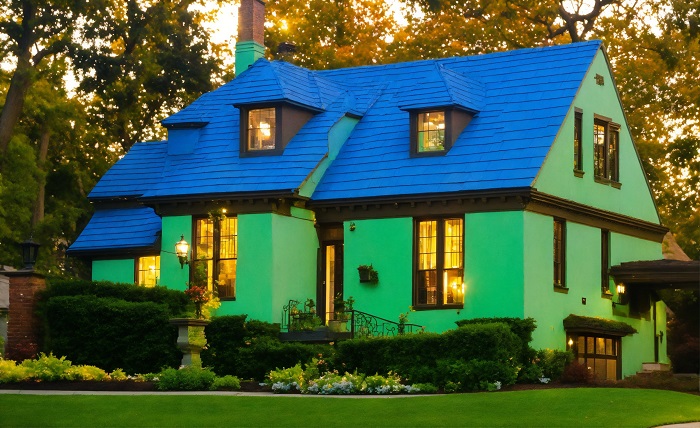Salt, Sun, Storms: Exterior Paint Strategies for James Island

Jutting out into the salt marshes just south of Charleston, James Island’s neighborhoods face constant exposure to salt, sun, and storms. Exterior painting in James Island requires safeguarding protection, not just aesthetics. Harbor breezes carry sea spray that settles on siding, trim, and railings. Combined with intense Lowcountry sunlight and high humidity, every primer choice and application step should be calibrated for coastal conditions. This guide covers strategies to maximize longevity and performance for James Island homes.
Understanding Coastal Wear and Tear
Salt crystals and moisture settle on siding, railings, and fasteners, drawing water into seams and joints. UV exposure breaks down binders, leading to fading and chalking, while repeated wet-dry cycles loosen adhesion on wood, fiber cement, and metal. Add wind-driven rain from summer storms, and any weak point becomes a failure point. The net effect is shorter repaint cycles unless the work plan accounts for the environment from prep to topcoat.
Local note: On days when the sea breeze kicks up off the harbor, homes closer to Folly Road tend to collect more salt spray on windward facades, so a quick freshwater rinse before any prep work pays off.
Prep That Actually Lasts
- Start with a thorough freshwater wash. Rinse from the top down to dissolve salt residue before using any cleaners; then apply a siding-safe detergent or TSP substitute, and rinse again until runoff runs clear.
- Address biological growth early. Spot-treat mildew and algae with an appropriate cleaner, then give surfaces time to dry fully; painting over live growth guarantees early failure.
- Sand and feather edges. Where paint has lifted, sand back to a sound edge; on bare wood, finish to a uniform profile so primer can grab evenly.
- Repair and seal. Replace decayed boards, tighten fasteners, and recaulk open joints with a high-performance, paintable sealant rated for coastal exposure.
- Local note: Near Harbor View Road, wind-driven rain tends to strike porch ceilings and stair stringers from a consistent direction, so those details benefit from a slightly higher-sheen finish that’s easy to rinse clean.
Primer Choices for Coastal Exposure
- Bare and weathered wood: Use a high-quality acrylic bonding primer with tannin blockers on cedar or redwood; for patched areas, spot-prime first, then full-prime to unify porosity.
- Metals and fasteners: Where rust is present, convert or mechanically remove it, then apply a corrosion-inhibiting metal primer that isolates remaining salts and shields against future flash rust.
- Masonry and stucco: After pH-neutral cure or prep, use a breathable, alkali-resistant primer; in hairline-cracked stucco, an elastomeric base system can bridge micro-movement.
- High-salt zones: On handrails, porch balusters, and windward elevations, choose primers specifically rated for marine or coastal conditions to slow under-film corrosion.
- Local note: Closer to the marsh along Riverland Drive, ground-level trim and kick plates see more salt deposition; a tougher enamel and frequent freshwater rinses help these areas last.
Paint Chemistry That Fights Salt and Sun
- 100% acrylic exterior formulations remain the workhorse for the area: flexible enough for thermal movement, with strong UV resistance and color retention.
- Elastomeric coatings excel on stucco or masonry where hairline cracking and wind-driven rain are concerns; they shed water while accommodating movement.
- For trim and doors, satin or semi-gloss finishes resist dirt and mildew and make routine freshwater rinsing more effective.
- Mildew-resistant additives and low-porosity films reduce organic growth in shaded areas such as north-facing facades and porch ceilings.
- Local note: On the stretch toward the causeway, deep porches can trap moisture; breathable primers and vented soffits help those shaded areas dry between summer squalls.
Color Selection With Coastal Light in Mind
- Lighter body colors reflect heat and slow binder breakdown, particularly useful on sun-washed exposures facing the harbor winds.
- Deep hues can still work on select elevations or accents when paired with UV-stable formulations and longer recoat windows; use the manufacturer’s light reflectance guidance to avoid heat-related warping on vinyl or composite substrates.
- Test patches in full sun and shade. Coastal light shifts quickly, and a color that reads balanced at noon can look flat at dusk—adjust trim contrast accordingly.
Timing Projects for Weather Windows
- Aim for mild temperatures, moderate humidity, and stable forecasts—spring and fall typically offer the best painting windows on the island.
- Avoid painting shortly after onshore wind events, when salt spray accumulates; add an extra rinse day before priming.
- Start work on leeward elevations in the morning to reduce condensation risks, moving to sun-warmed facades once surfaces are dry.
Paint crews familiar with James Island’s wind patterns and afternoon sea breeze know to sequence prep and coating so surfaces are dry when the day heats. As locals know, Wade Paint Co. conducts efficient painting methods and timelines—with schedules priming for calmer mornings to reduce airborne salt settling during application.
Maintenance That Extends the Cycle
- Quarterly freshwater rinses on windward sides and handrails slow salt accumulation and mildew growth.
- Touch-up high-wear edges—stair tread nosings, porch rail caps, door thresholds—before exposed film failures spread.
- Keep vegetation trimmed back to promote airflow; shaded, damp siding fails fast in coastal humidity.
Checklist: Exterior System for James Island
- Wash: Freshwater rinse, cleaner, thorough final rinse
- Dry: Allow full dry time; verify with a moisture meter on wood
- Prep: Scrape, sand, set, and seal fasteners, repair, and caulk
- Prime: Substrate-specific primer; spot-prime repairs, then full-prime where needed
- Paint: Coastal-rated 100% acrylic or elastomeric; sheen matched to use
- Details: UV-resistant caulk and sealers; stainless or coated fasteners
- Maintenance: Rinse quarterly; log touch-ups by elevation and component
Common Failure Patterns and Fixes
- Chalking and color fade on south- and west-facing walls: upgrade to higher-grade acrylics with stronger UV packages; consider a lighter hue.
- Peeling at window sills and rail caps: water is getting in—improve drip edges, re-seal joints, and switch to a more water-shedding topcoat.
- Mildew on porch ceilings and shaded facades: clean, prime with a stain-blocking, mildew-resistant primer, and use a finish with added mildewcide and a slightly higher sheen.
- Rust bleed at nail heads: set or replace with stainless/galvanized, spot-prime with a rust-inhibiting primer, and topcoat.
Planning and Documentation
Keep a simple log: products by manufacturer and lot, color codes, primer/finish pairing, film build targets, and weather conditions. Note which elevations take the brunt of onshore winds; those will be first for rinse cycles and touch-ups. Good records shorten future projects and support warranty conversations if ever needed.




